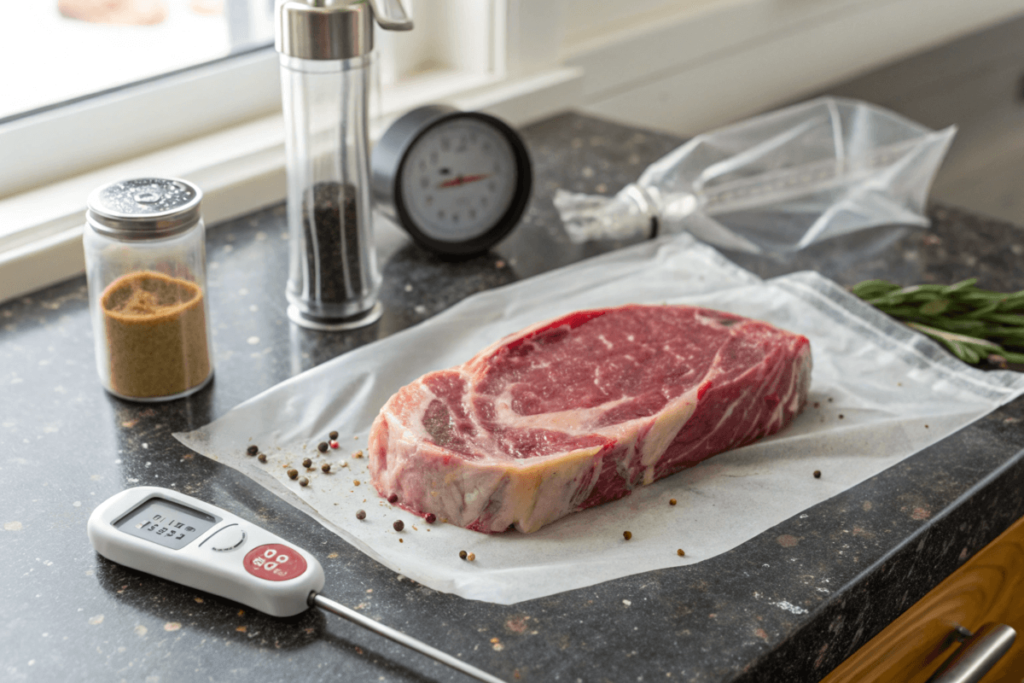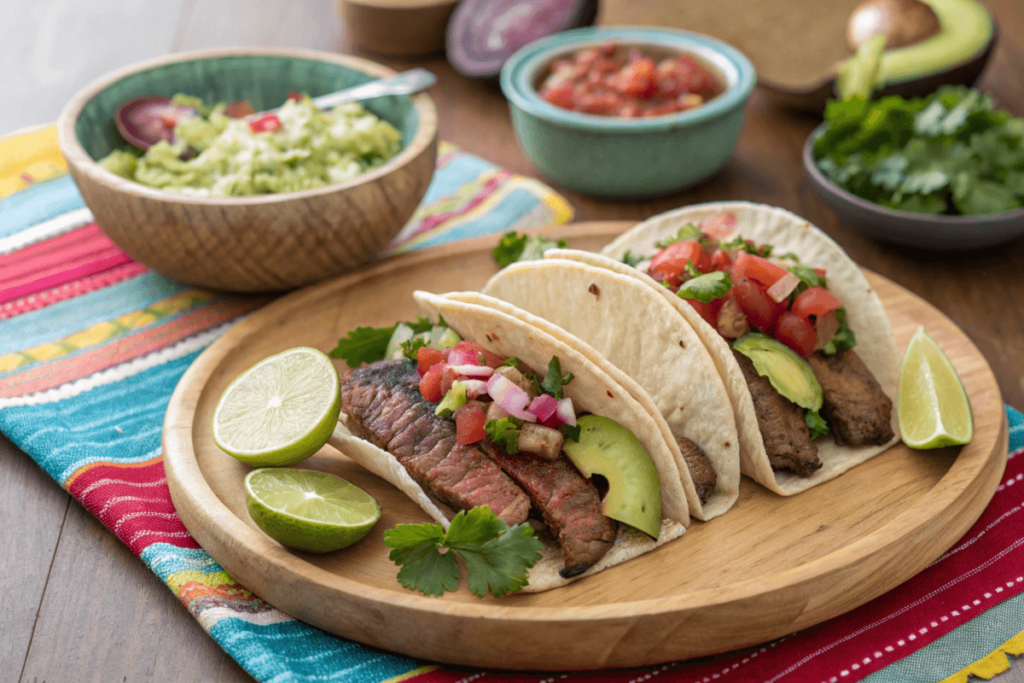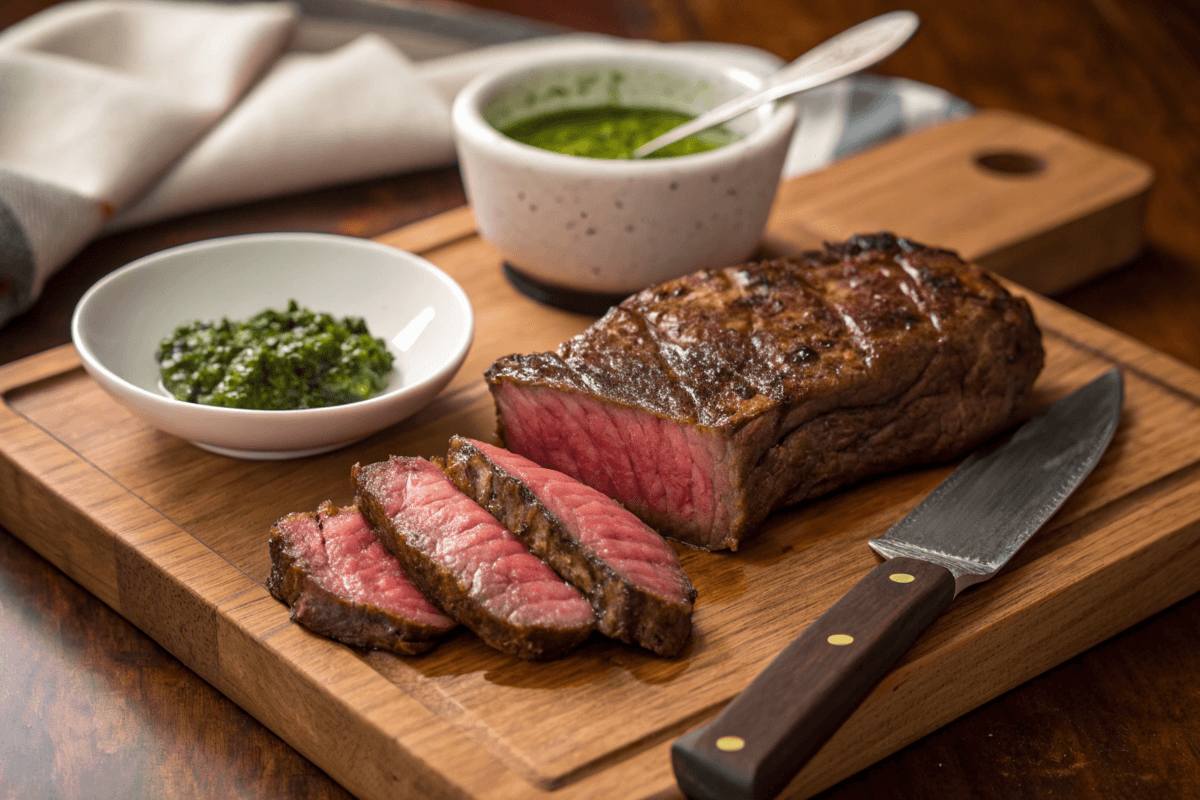H1: The Complete Guide to Reheating Steak Without Losing Its Flavor
Introduction
Reheating steak can feel tricky—how do you warm it up without losing its flavor or turning it into a dry, rubbery mess? If you’ve been wondering how to reheat steak the right way, this guide is here to help. We’ll explore the best methods for keeping your steak juicy and tender, from using an oven to the precision of sous vide. Plus, we’ll share creative ideas for repurposing reheated steak into new and delicious dishes. Let’s make those leftovers shine!
Whether you’re a steak aficionado or just looking to make the most of your leftovers, this article will give you everything you need to know about how to reheat steak. Let’s dive in!
Why Proper Reheating of Steak Matters
Understanding the Challenges of Reheating Steak
Reheating steak isn’t as simple as tossing it into a pan or microwave. When reheated poorly, steak can lose its natural juices, leaving you with a chewy, tough bite. Overcooking is a common culprit, often caused by applying too much heat too quickly. The key is to strike the perfect balance—warming the steak evenly while locking in its moisture and flavor.
But why does steak dry out in the first place? It’s all about the proteins and juices. When cooked steak cools, the juices redistribute, often escaping as the meat sits. Reheating improperly can further expel these juices, leaving the steak dry and bland.
The Benefits of Proper Reheating Techniques
Why go the extra mile to reheat your steak the right way? It’s all about preserving its texture and flavor. A properly reheated steak can taste almost as good as it did fresh off the grill. Here’s what you gain by using the right techniques:
- Juiciness: Retaining moisture ensures a tender, flavorful bite.
- Flavor: Proper reheating keeps the steak’s rich, savory notes intact.
- Versatility: A well-reheated steak opens up endless possibilities for sandwiches, tacos, and more.
Taking the time to reheat steak thoughtfully isn’t just about avoiding mistakes—it’s about making the most of your leftovers. By understanding the process, you can turn yesterday’s dinner into today’s gourmet meal.
How to Reheat Steak Without Losing Flavor
Preparing Your Steak for Reheating
The Importance of Bringing Steak to Room Temperature
Before you even think about reheating steak, let it sit at room temperature for about 20–30 minutes. Why? When steak is cold, its interior and exterior heat unevenly, leaving you with cold spots or overcooked edges. By bringing it closer to room temperature, you ensure even heating and better texture.
To do this, simply remove the steak from the fridge, cover it lightly to prevent contamination, and let it sit on the counter. This small step can make a world of difference in retaining the steak’s moisture and flavor.

Checking for Signs of Spoilage
No one wants to waste good steak, but safety comes first. Always check your leftover steak for any signs of spoilage before reheating. Look for changes in smell (a sour or off-putting odor), color (gray or greenish tints), and texture (a slimy feel). If your steak shows any of these signs, it’s best to toss it.
Proper storage is key to avoiding spoilage. Wrap the steak tightly in plastic wrap or store it in an airtight container to lock out air and bacteria.
Storing Steak Safely Before Reheating
Steak should be stored in the refrigerator within two hours of cooking. According to food safety guidelines, leftover steak is best consumed within 3–4 days. For longer storage, consider freezing it. Frozen steak retains its quality for up to three months when wrapped in airtight packaging.
Pro Tip: To freeze steak, use freezer-safe bags and remove as much air as possible. Label it with the date to avoid forgetting how long it’s been there.
Top Methods for Reheating Steak
Reheating Steak in the Oven
This is a classic method for evenly reheating steak without drying it out. To reheat steak in the oven:
- Preheat your oven to 250°F.
- Place the steak on a wire rack set over a baking sheet. This allows air to circulate and prevents sogginess.
- Heat the steak for about 20–30 minutes or until it reaches an internal temperature of 110°F.
Advantages: The oven gently warms the steak, preserving its tenderness.
Disadvantages: It takes longer than other methods, and you might need to sear it afterward for a crispy exterior.
Using the Sous Vide Method for Reheating
If you’ve got a sous vide machine, this is hands-down the best way to reheat steak. The sous vide technique slowly warms steak in a water bath, ensuring it heats evenly without losing juices.
Here’s how:
- Vacuum-seal your steak or place it in a heavy-duty ziplock bag, removing as much air as possible.
- Set your sous vide machine to 135°F (or your desired level of doneness).
- Submerge the bag in the water bath for 1–2 hours.
- Finish the steak on a hot skillet or grill for a quick sear.
This method locks in flavor and moisture, delivering steak that tastes almost as fresh as the day it was cooked.
Reheating Steak on the Stovetop
For a quick and flavorful option, use a cast-iron skillet. The stovetop method is ideal if you want to add a crispy crust to your reheated steak.
Here’s what to do:
- Heat a tablespoon of oil (e.g., olive or grapeseed oil) in a cast-iron skillet until it starts to shimmer.
- Place the steak in the skillet and cook over medium heat, flipping every minute.
- Continue until the steak is warmed through, aiming for an internal temperature of 120–130°F.
This method provides a golden crust while retaining the steak’s tenderness. However, it’s essential to watch closely to prevent overcooking.
Microwave Reheating: What to Know
While it’s not the most recommended method, the microwave can work in a pinch. To avoid drying out your steak:
- Slice the steak into smaller portions for faster, even heating.
- Place it on a microwave-safe plate and cover it with a damp paper towel.
- Heat in short bursts of 30 seconds, flipping the steak between intervals.
Although convenient, the microwave is the riskiest method for maintaining flavor and texture. Use it only when time is of the essence.
Using Reheated Steak in Recipes
Creative Ways to Repurpose Reheated Steak

Reheated steak is a versatile ingredient that can transform simple dishes into something extraordinary. Here are some delicious ways to repurpose your leftover steak:
- Steak Tacos or Fajitas: Thinly slice the reheated steak and pair it with warm tortillas, sautéed peppers, and onions. Top it off with guacamole or a dollop of sour cream.
- Hearty Steak Sandwiches: Layer the steak on a toasted baguette or ciabatta bread, adding caramelized onions, melted provolone, or a tangy horseradish sauce for a bold flavor.
- Steak Salad: Toss sliced steak over a bed of mixed greens, cherry tomatoes, and red onions. Drizzle with a balsamic vinaigrette or creamy blue cheese dressing for a fresh and satisfying meal.
- Pasta with Steak: Add diced steak to creamy pasta dishes like Alfredo or toss it with olive oil, garlic, and Parmesan for a quick and hearty dinner.
These recipes highlight how reheated steak can seamlessly enhance a variety of meals, proving that it’s more than just a leftover.
Best Sauces and Marinades for Reheated Steak
A good sauce or marinade can take your reheated steak to the next level, masking any slight dryness and adding layers of flavor. Here are some top picks:
- Chimichurri: This tangy, herbaceous sauce pairs beautifully with reheated steak. Its fresh, zesty flavor enhances the meat’s natural richness.
- Gravy or Au Jus: Recreate a steakhouse experience by drizzling warm gravy or au jus over your steak. It adds moisture and depth of flavor.
- Teriyaki Glaze: For an Asian-inspired twist, coat your reheated steak with a sweet and savory teriyaki glaze.
- Garlic Butter: Simple yet decadent, a dollop of garlic butter can melt over the reheated steak, creating a luscious sauce in seconds.
Want to try new recipes with your leftover steak? For more delicious meal ideas, explore our curated recipe collection.
Frequently Asked Questions (FAQs)
How Long Does Cooked Steak Last in the Fridge?
Cooked steak can safely stay in the fridge for 3–4 days if stored properly in an airtight container or tightly wrapped. Be sure to check for signs of spoilage, such as off smells or discoloration, before reheating it.
Can You Reheat Steak More Than Once?
It’s best to reheat steak only once to maintain its quality and safety. Repeated reheating can dry out the meat and increase the risk of bacterial growth. If you anticipate leftovers from reheating, reheat only the portion you plan to eat.
What’s the Best Method to Reheat Steak Quickly?
The stovetop method is one of the quickest ways to reheat steak without sacrificing flavor or texture. Using a hot skillet ensures even reheating while adding a crispy crust to the exterior.
Does Reheating Steak Affect Its Nutritional Value?
Reheating steak does not significantly alter its nutritional value. While slight nutrient loss may occur during reheating, the protein content remains largely intact, making it a nutritious option for a second meal.
Tips and Tricks for Reheating Steak Perfectly Every Time
Common Mistakes to Avoid
Reheating steak might seem simple, but there are a few common mistakes that can ruin the flavor and texture:
- Skipping Room Temperature: Jumping straight from the fridge to the heat is a no-go. Always let your steak sit at room temperature for 20–30 minutes before reheating.
- Using Too Much Heat: High heat can dry out the steak or overcook it. Opt for gentle, consistent heating methods, like using an oven or sous vide.
- Ignoring Rest Time After Reheating: Just like when it’s freshly cooked, steak needs time to rest after reheating to let the juices redistribute. Cut into it too soon, and you risk losing flavor.
By avoiding these mistakes, you’ll ensure your steak stays moist, tender, and delicious.
Tools and Equipment to Make Reheating Easier
Having the right tools can elevate your reheating game:
- Cast-Iron Skillet: This is perfect for the stovetop method, giving your steak a crispy crust while retaining its juiciness.
- Wire Rack and Baking Sheet: Essential for reheating steak in the oven, these ensure even heating without sogginess.
- Meat Thermometer: Take the guesswork out of reheating by checking the steak’s internal temperature to prevent overcooking.
- Sous Vide Machine: If you’re a steak lover, investing in a sous vide machine is worth it for reheating steak perfectly every time.
These tools not only make reheating easier but also help maintain the steak’s quality and flavor.
Conclusion
Reheating steak doesn’t have to be tricky or disappointing. By using the right techniques, avoiding common mistakes, and taking a few extra steps, you can enjoy leftovers that are nearly as good as the original meal. Whether you choose the oven for even heating, the stovetop for a crispy crust, or sous vide for precision, there’s a method to suit every situation.
When reheated properly, steak becomes a versatile ingredient for creating exciting new dishes like tacos, salads, or sandwiches. Adding flavorful sauces or marinades can take it up a notch, ensuring every bite is as satisfying as the first.
Mastering how to reheat steak isn’t just about saving leftovers—it’s about elevating them. With this guide, you’ll never have to settle for dry, flavorless steak again.
Frequently Asked Questions About Reheating Steak
How to Reheat Steak Without Losing Flavor?
To preserve flavor, choose a method that gently warms the steak while keeping it moist. Using a sous vide machine or reheating in the oven are excellent options. Both allow the steak to heat evenly without drying out. Avoid rushing with high heat, as this often results in tough, flavorless meat.
Is It Safe to Microwave Steak?
Yes, but it’s not ideal for maintaining flavor or texture. If you must use a microwave, slice the steak into smaller pieces for even heating. Cover it with a damp paper towel to lock in moisture, and heat in short intervals to avoid overcooking. While quick, this method is better suited for dishes where the steak is mixed with other ingredients.
Can You Freeze Leftover Steak?
Absolutely! Freezing leftover steak is a great way to extend its shelf life. Wrap it tightly in plastic wrap and place it in an airtight container or freezer-safe bag. When you’re ready to reheat, let the steak thaw overnight in the fridge for the best results. For tips on freezing other meats, check out this helpful guide on storing food properly.
What’s the Best Way to Reheat Steak for a Salad?
If you’re adding reheated steak to a salad, the stovetop method is your best bet. A quick sear in a hot pan not only warms the steak but also adds a crispy crust that pairs beautifully with fresh greens. Let the steak cool slightly before slicing to prevent wilting the salad.
Final Thoughts and Key Takeaways
Reheating steak doesn’t have to be a gamble. By following the right steps, you can transform your leftover steak into a meal that’s just as enjoyable as the first. The key is to choose a method that balances gentle heating with maintaining moisture. Whether you prefer the precision of sous vide, the convenience of the oven, or the quick crispiness of the stovetop, there’s a perfect method for every need.
When thinking about how to reheat steak, remember these essentials:
- Bring the steak to room temperature first.
- Use low, steady heat to avoid overcooking.
- Add moisture or sauces to enhance flavor.
With these tips in mind, your leftovers will never go to waste. So, the next time you have steak to reheat, you’ll know exactly what to do. For more culinary inspiration, explore our collection of recipes and kitchen tips.

